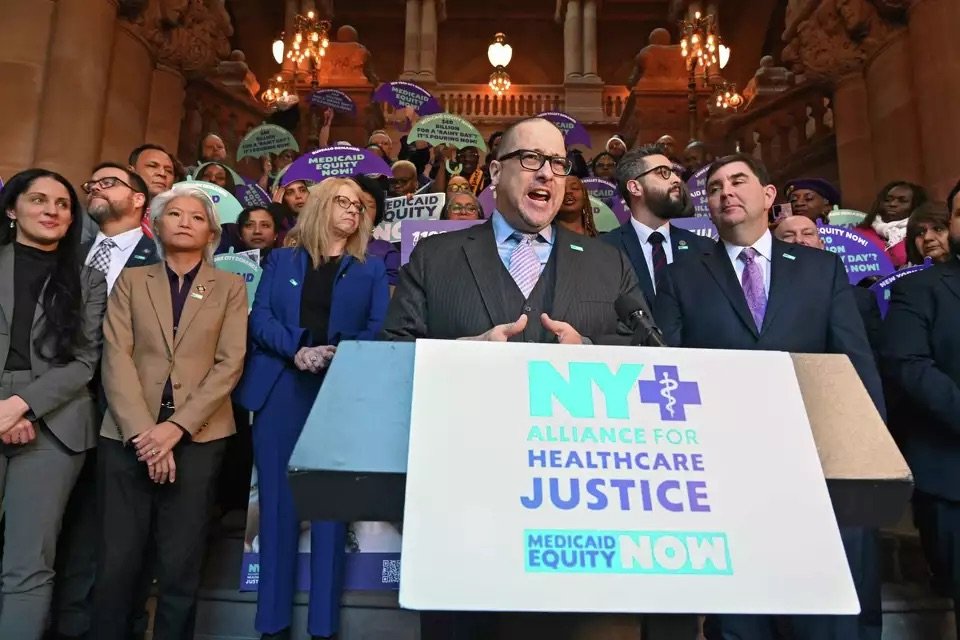Hospital groups launch multi-million-dollar campaign as fiscal gap looms



State Sen. Gustavo Rivera, D-Bronx, speaks during a press conference with hospital leaders and health care advocates at the state Capitol in Albany. Advocates are asking the state to dip into its reserve funds to address longstanding Medicaid underpayments to New York’s hospitals. Lori Van Buren/Times Union
Major health care organizations are lobbying the Hochul administration to boost Medicaid reimbursement rates over the next four years.
by Raga Justin
ALBANY — Health care groups are using a multi-million dollar lobbying blitz to seek increased Medicaid reimbursement rates that advocates contend could help stave off a funding cliff for financially strapped “safety-net” hospitals.
The Healthcare Education Project, a joint venture between the major health care union 1199SEIU United Healthcare Workers East and the Greater New York Hospital Association, recently launched the more than $10 million ad campaign to push for major increases to Medicaid reimbursement rates this year. The group hopes to pressure Gov. Kathy Hochul’s administration to tap money from the state’s reserves to make up a deficit in funding that they said has hurt the quality of health care, especially for lower-income New Yorkers.
Hospitals received a 7.5 percent increase in Medicaid reimbursement rates last year, the first raise in over a decade. But hospital officials have said that even with that increase, access to care remains threatened, especially since the COVID-19 pandemic. They’ve pointed to a persistent 30 percent shortfall between the care that they provide to New Yorkers on Medicaid and the amount of money they receive from the state to cover the cost of that care — and contend that last year’s progress has done little to mitigate chronic underpayment.
The calls for another boost come as Hochul is preparing her executive budget that will be unveiled in the coming weeks. Kenneth E. Raske, president of the Greater New York Hospital Association, said advocates are requesting that Hochul raise the rates over several budget cycles until the state is paying 100 percent of the cost of Medicaid care.
“Let’s roll up our sleeves and now work together on making a down payment in this year, so that we can begin to eliminate these disparities in subsequent years,” Raske said at the Capitol on Monday. He added that he does not want the state to increase taxes to come up with revenue that could offset the gap, noting: “The issue here is a question of choices.”
Health care advocates say that the longstanding struggle of safety-net hospitals that have a high percentage of Medicaid patients has translated into real-time loss of quality care. (Safety-net hospitals are facilities that are obligated to provide health care for all individuals regardless of their insurance status or ability to pay.)
Helen Schaub, a vice president with 1199SEIU, said the funding gap has meant that certain hospitals and health providers are actively considering slashing some centers, pointing specifically to the Capital Region’s Burdett Birth Center. That facility has been under threat of closure for months, with operators saying that the state’s new minimum staffing requirements have contributed to its struggles.
“These are real consequences for Medicaid recipients,” Schaub said. “Hospitals have to start making some decisions.”

